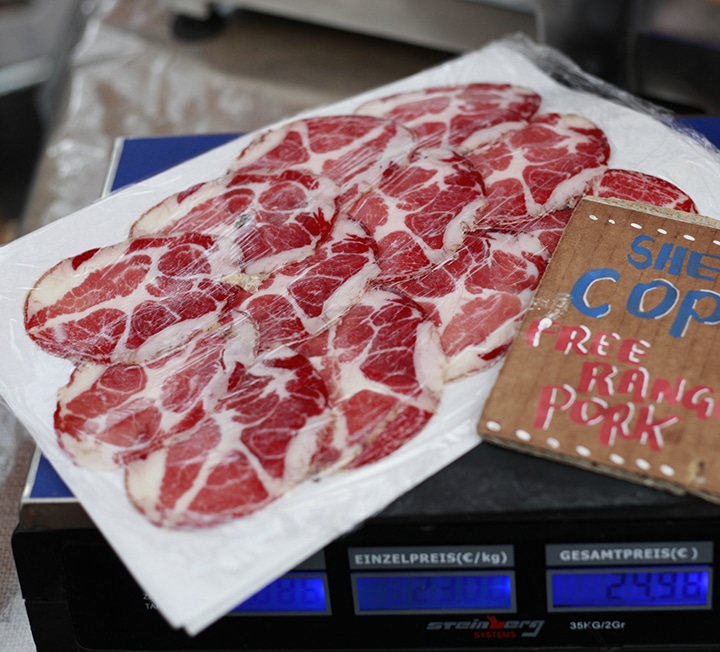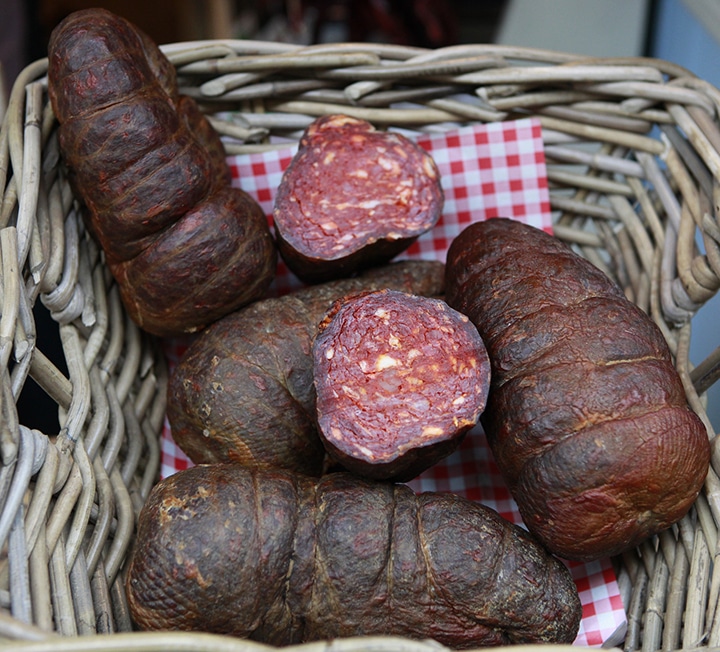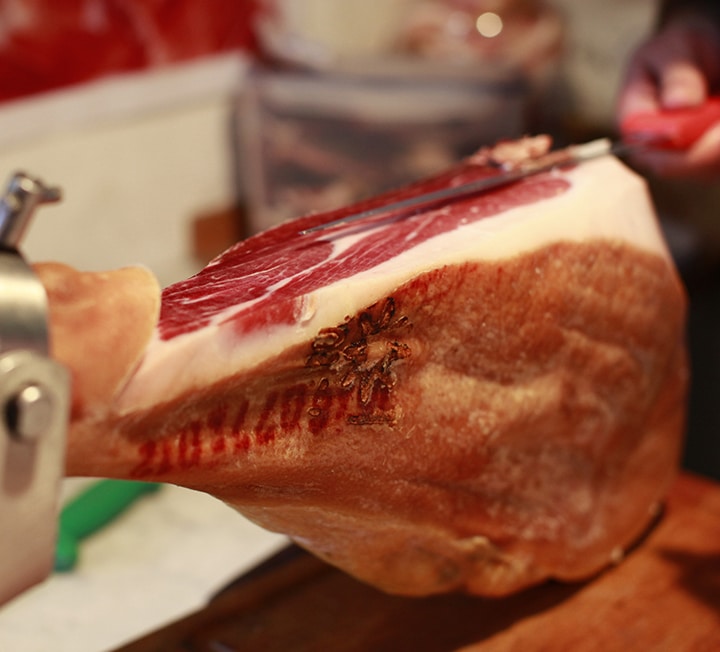Cut & dried: Italian salumi (part two)
In the second of two posts on Italian salumi, Ed Smith takes a look at some lesser-known regions and varieties


“THE FAT IN NDUJA COMES BOTH FROM THE BACK OF HEAVY PIGS AND THE TRIM OF BELLIES AND SHOULDERS – AND IT’S DELICIOUS”
If you wanted to put together a varied Italian salumi platter, you could fill it, very, very easily, with crowd-pleasers from Emilia-Romagna, Tuscany and Lombardy: a coppa, some prosciutto or culatello, a couple of salami – a Toscana and a Milano, perhaps – and some mortadella. It would be a perfectly good meat board. World class, in fact (there’s more on those meats in last month’s post). Yet it wouldn’t represent the full scope of Italian salumi in either geography or style.
Two key regions of salume production represented at the Market are South Tyrol, or Alto Adige – a mountainous province in northeast Italy, bordered by Austria and Switzerland – and Calabria, which is all the way down at the opposite end of the country, in the southwestern ‘toe’. The styles and flavours of products in these regions are completely different to each other, and indeed to the regions explored last time. In part, this can be explained by their terroir and the other foods of each area.
Calabrian salumi
Nduja, probably the best-known type of Calabrian salume, is effectively a paste that consists of around 50 per cent pork fat and 50 per cent Calabrian chilli. The fat will have come both from the back of heavy pigs, but also the trim of bellies and shoulders (so there’ll be a few scrapings of meat in there), and, wow, it’s delicious.
De Calabria is the place to head for nduja. Theirs is both truly authentic and of a fantastic quality. You’ll see the fresh chilli is unevenly chopped (a sure sign of an artisan product!) and has infused the product with a flame-red colour. Spread it on biscuits or bread and drizzle with honey. Or use it in your cooking: under the skin of a roast chicken, stirred through a pasta sauce, in the middle of arancini or croquettes, or fry your eggs in a good chunk of it.
Do talk with the guys at De Calabria, though, as you’ll find they’ve a few other bits of salumi to offer – their nduja producer is also the farmer of the pigs, so makes use of all of the beast. There’s a chilli-spiced capocollo, chilli-spiced pancetta, chilli-spiced salame (soppressata), and a totally-porky, nose-to-tail pressed head terrine known in Calabria as gelatina. All fantastic.
Alpine salumi
If fresh, locally-grown chilli defines the cured meats produced in Calabria, then the ingredient that arguably defines and certainly makes meats from the South Tyrol stand out is smoke.
The reason for this, I’d posit, is that as we move north and uphill, the environment was (is) no longer suited to air-drying meats. Once up in the Dolomites (and then into Austria, Germany and into Scandinavia), the Romans and other early curers couldn’t simply leave a ham or neck muscle in a cave and return seven months later to collect the basis of their sublime meat platter, as they might have done in Tuscany. They found, however, that if you cold-smoke the meat once salted, then the bacteria that makes meat inhospitable for eating and storing could still be defeated. Smoke is now a key flavour of Alpine meats. Originally it would have been a necessity, too.
Next time you’re at the Market, visit Alpine Deli and have a chat with owner Thea, as you taste and buy her super products. The standout meat is speck Alto Adige. In one sense this is the same as prosciutto, but only in that it’s a ham made from the back leg of a pig. It’s also very different to those meats from Parma and San Danielle we discussed last time. In South Tyrol, the ham is de-boned before it is cured and dried. It’s also smoked over oak (again, before drying). Actually, there’s another similarity with the prosciuttos: speck is delicious sliced very thinly and savoured on a meat board. Thea tells me she also enjoys cooking with it – cubed in pasta sauces, or as a component of Alpine bread dumplings.
When you speak to Thea, you’ll notice that her Italian accent is, well, German. Most Italians from this province speak German rather than Italian and in many senses, we should consider the cuisine of that area as ‘Alpine’ (rather than Italian or Austrian). Other cured meat products that are distinct to the wider region are her ‘chimney sausages’ – small salamis that, originally, would’ve been smoked somewhere high up the chimneys of Alpine smallholders – and her venison bresaola, which of course reflects the fact that the mountainous terrain of the area is better suited to roaming deer than cattle farms.


